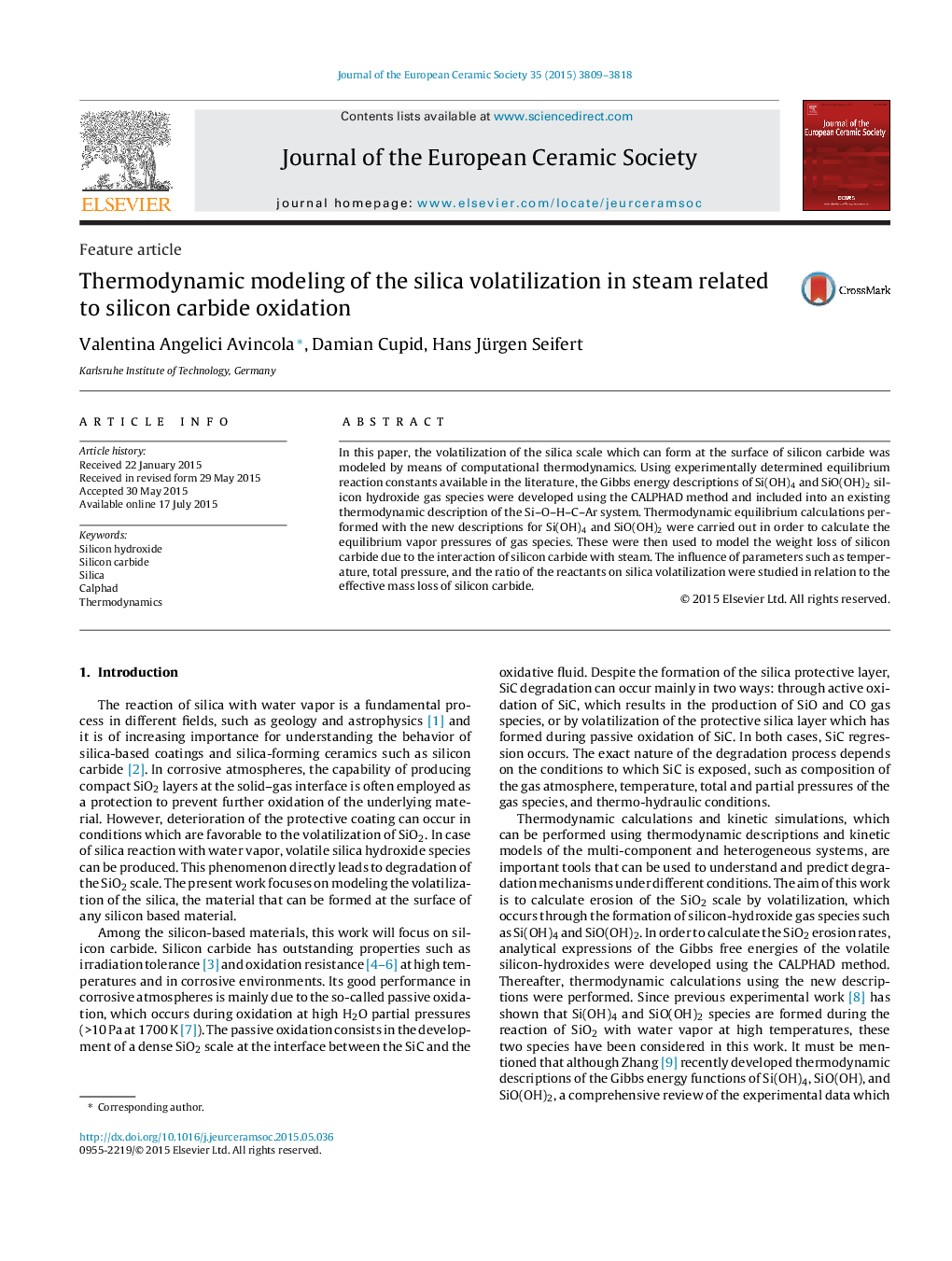| Article ID | Journal | Published Year | Pages | File Type |
|---|---|---|---|---|
| 1473991 | Journal of the European Ceramic Society | 2015 | 10 Pages |
In this paper, the volatilization of the silica scale which can form at the surface of silicon carbide was modeled by means of computational thermodynamics. Using experimentally determined equilibrium reaction constants available in the literature, the Gibbs energy descriptions of Si(OH)4 and SiO(OH)2 silicon hydroxide gas species were developed using the CALPHAD method and included into an existing thermodynamic description of the Si–O–H–C–Ar system. Thermodynamic equilibrium calculations performed with the new descriptions for Si(OH)4 and SiO(OH)2 were carried out in order to calculate the equilibrium vapor pressures of gas species. These were then used to model the weight loss of silicon carbide due to the interaction of silicon carbide with steam. The influence of parameters such as temperature, total pressure, and the ratio of the reactants on silica volatilization were studied in relation to the effective mass loss of silicon carbide.
